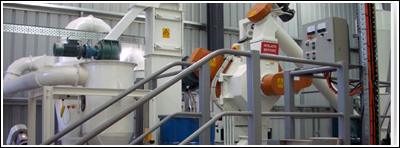How to Choose Pellet Stoves
Pellet Stove Purchasing Guide
Biomass pellet stove is a new type of kitchen stove. It has many advantages compared to the traditional stoves, and has great economical and social benefits.

The pellet stoves have similar shape to the wood stoves, but the similarity ends there. Instead of burning wood or coal, pellet stoves burn small pellets, which are made from recycled crop stalks or wood shavings. Using biomass pellets as fuel can bring so many advantages, like enhancing the combustion efficiency and reducing the manufacturing cost. So more and more people are interested to choose pellet stoves either for industry or home use.
Advantages of the Pellets Fuel
The pellets burning in pellet stoves are actually made from corn stalks, wood shavings, peanut shells and even dry bark. Through the process of grinding, compressing and extruding, the materials would be mixed adequately, which contributes to the stability and efficiency of the heating system.
Because of the pellets’ consistency and the pellet stoves’ mechanics, burning a certain amount of pellets in pellet stoves can produce more energy than the equal amount of woods. What’s more, complete combustion of pellets does not cause any harmful gas.
Intense compression and high temperature squeeze the moisture out of the pellets, dropping the moisture content to below 10 percent. Compared with pellets, the moisture of cord wood is from 20 percent to 30 percent. It’s obvious that drier fuel can produce more heat.
As to the environmental issues, particulate matter is an important measure of pollutants in the air. Burning process inevitably produces particulates more or less. According to EPA-certified, wood stoves give off about 5 gram of particulates per hour, while pellet stoves give off less than 1 gram per hour.

How to choose a pellet stove
In order to meet the different needs of customers, engineers from GEMCO have designed different types of pellet stoves.Top-feed pellet stove. A top-fed pellet stove can reduce the chance of fire burning back into the hopper because of its pellet delivery system. But the combustion chamber is more likely to be impeded with ash and clinkers (the deposits caused by reheating ash). As a result, many manufacturers of top-fed models recommend burning high-grade, low-ash pellets.
Bottom-fed pellet stove. Bottom-fed models don’t require premium fuel because the ash and clinkers are pushed into the ash pan. But, with steady use, you will have to remove the ashes about once a week. An easy-to-use, large-capacity ash access drawer makes cleanup easier.
Of course, the motors of a pellet stoves require electricity (some models have battery backup units) to work, so the stove should be placed near an outlet. If power outages happen frequently in your area, and the stove does not have battery backup units, you may want a gas-powered generator on hand.
After buying a pellet stove, the most important thing you should consider is where to put it. The location of the stove has a great deal to do with its heating efficiency. In most cases, it’s placed in the room that people want to heat, which is good. But If you wish to heat an entire house, a central location or a fan system to circulate the heat would be imperative.
Get in touch now!











